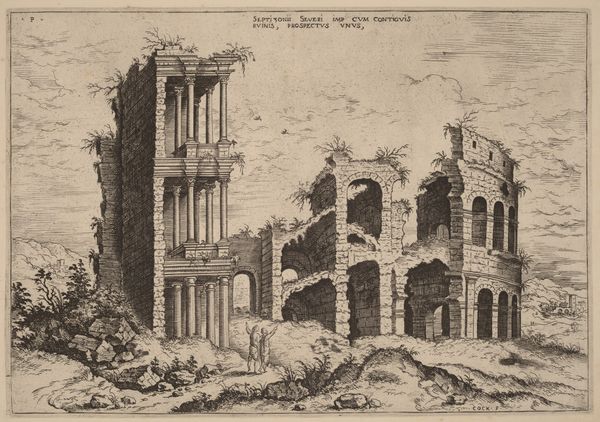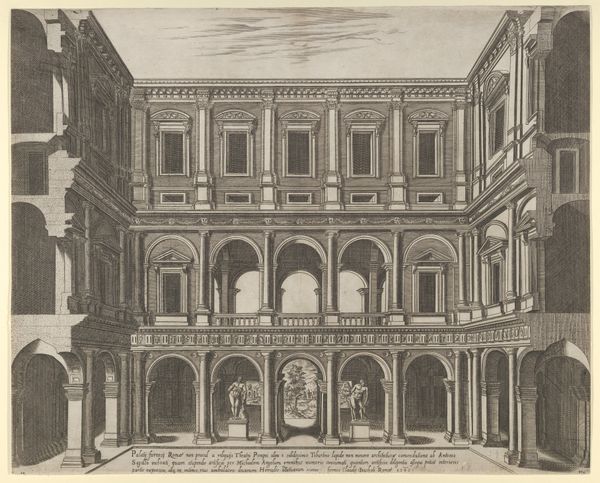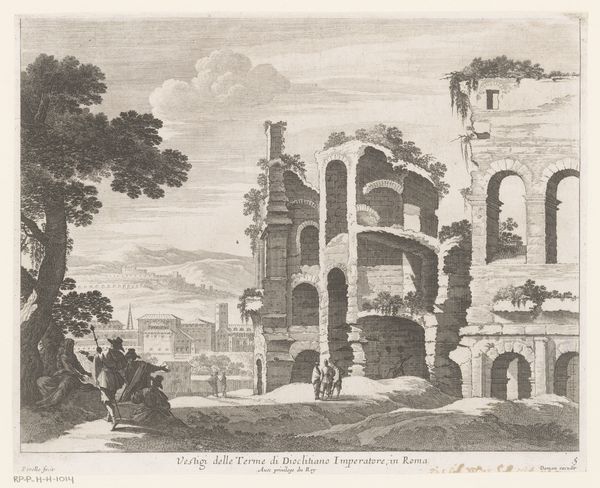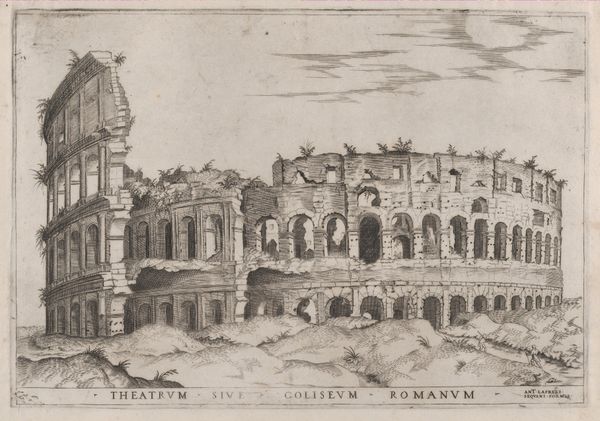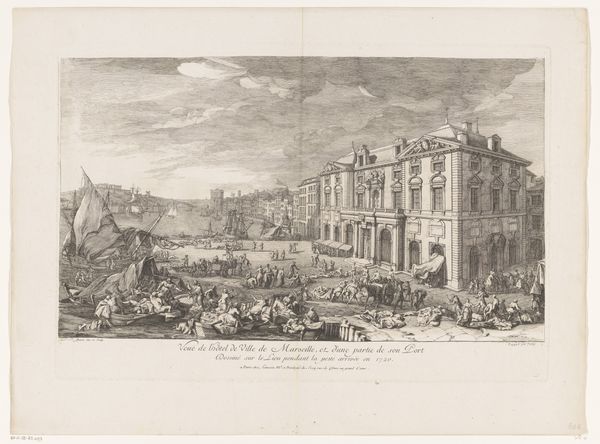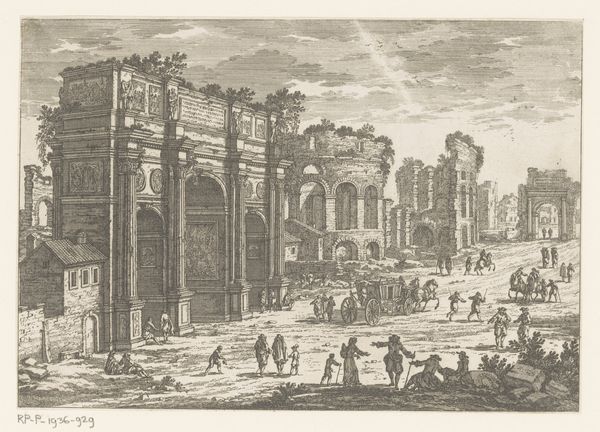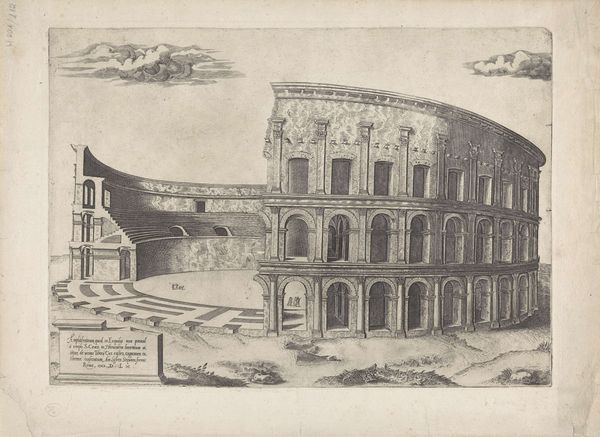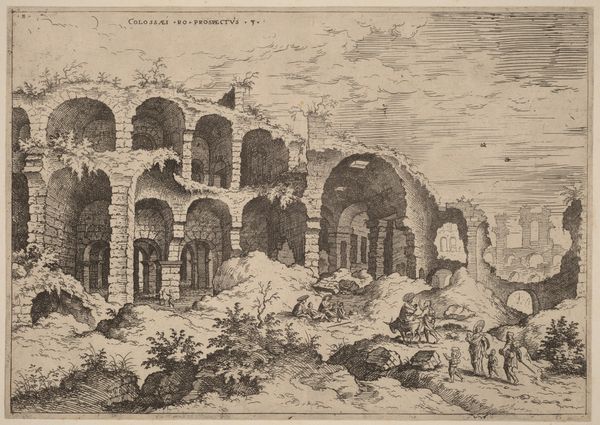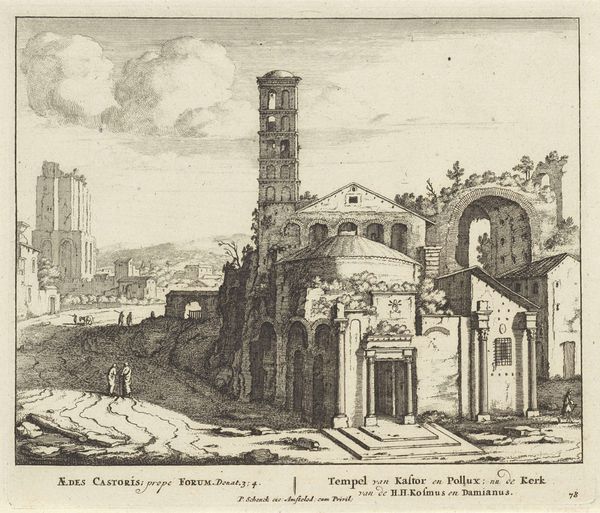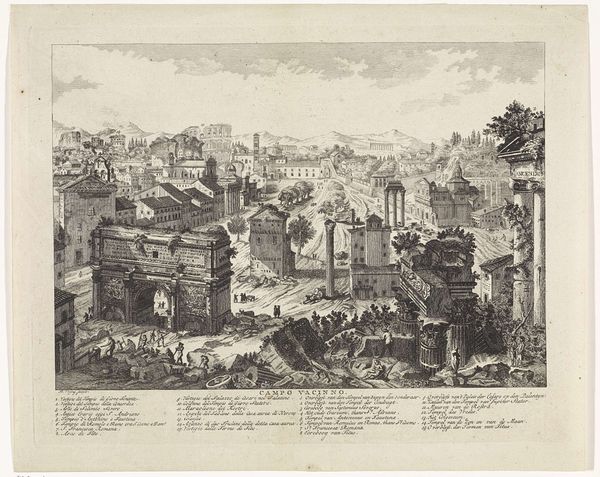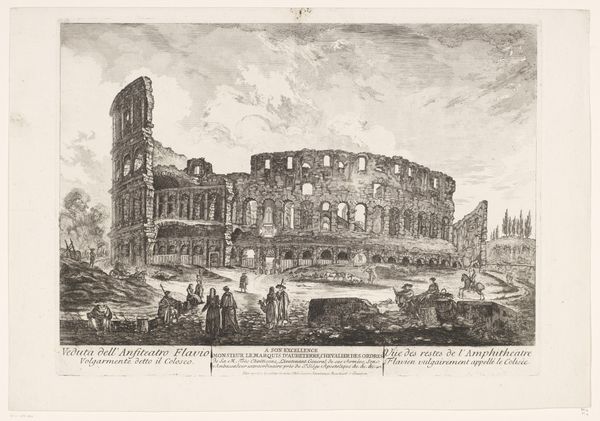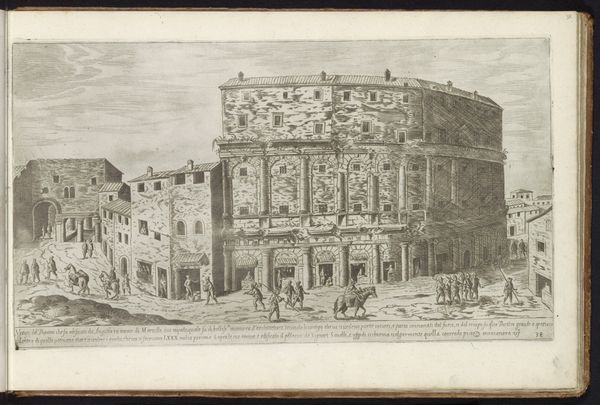
print, engraving
#
baroque
#
pen drawing
# print
#
landscape
#
ancient-mediterranean
#
cityscape
#
engraving
Dimensions: height 161 mm, width 230 mm
Copyright: Rijks Museum: Open Domain
Curator: The delicate lines of this print immediately convey a sense of melancholy. It's a far cry from the Colosseum's vibrant past. Editor: Indeed. What we're seeing here is Adam Perelle's "View of the Colosseum," dating roughly between 1650 and 1695. It's an engraving, a print, a medium intrinsically linked to dissemination and access. Consider how many eyes it reached, spreading this vision of Rome. Curator: Absolutely. This depiction shifts the narrative away from triumphal grandeur to something far more complex, acknowledging the ravages of time and the inevitable decay of power. It forces us to confront the very concept of empire, the social hierarchies that propped it up, and ultimately, its fragility. We’re seeing not just a monument, but a symbol of collapsed systems. Editor: The method itself—the meticulous engraving—highlights the contrast. Stone gives way to line, volume becomes surface. The act of reproducing this monumental structure shrinks it down to something portable, a commodity. How might the original stonemasons have regarded this new method, or the dissemination of their craft through alternative means? Curator: Precisely! Think of the social dynamics inherent in its viewing, then and now. Who was allowed to create grand monuments, whose labor fueled the process, and whose stories are intentionally omitted. This print, therefore, offers a space for engaging in narratives of colonialism, empire, and labor, questioning who has the power to represent the past, and to whom this representation is afforded. Editor: Look closely at how Perelle captured the vegetation growing within the ruins, life reclaiming the site. What had once been strictly controlled and ordered, shaped through human labor and artistic intent, becomes fertile ground again. Curator: It certainly makes you ponder about our own place in history. It’s a stark reminder of the transience of human achievement and the continuous negotiation between the natural world and human ambition. Editor: Perelle's vision through these humble materials prompts reflection, doesn't it? The grand stones now subservient to paper and ink, circulated as image and idea. Curator: A sobering and poignant dialogue, connecting the ancient with a broader sociopolitical discourse.
Comments
No comments
Be the first to comment and join the conversation on the ultimate creative platform.

